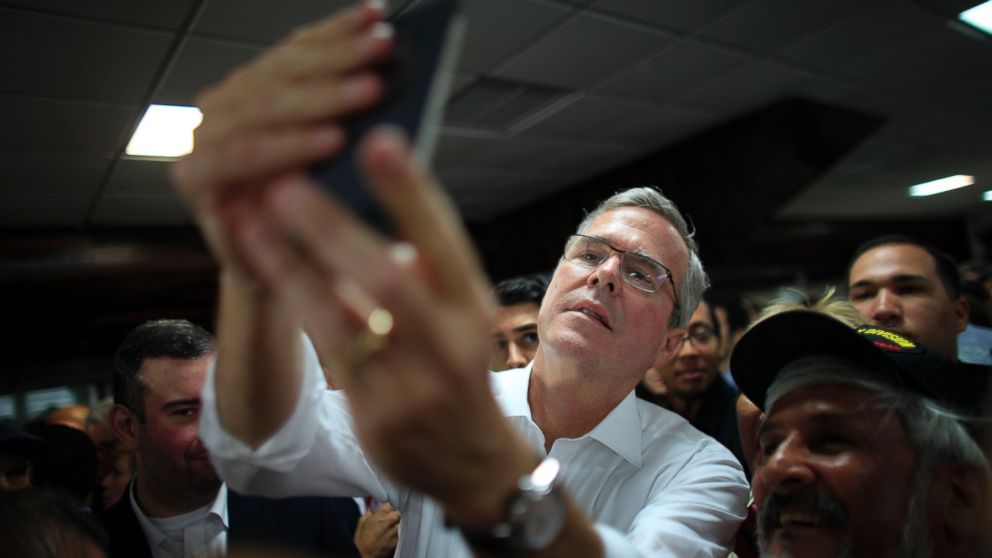Here’s What the 2016 Presidential Campaign Looks Like on Snapchat
As the 2016 election heats up, so does Snapchat's popularity.

July 3, 2015 — -- Before Chris Christie announced his presidential candidacy, he posted a picture on Instagram and Twitter with his Snapchat handle.
He immediately made use of the app during his campaign trek through New Hampshire. Users who follow Christie on Instagram can currently access his snap story, a nearly 3-minute long series of videos showing bits of his stops across the state, talking to voters and greeting them after his speeches.
Christie may be the 14th GOP candidate to enter the presidential race, but he is the 7th from either side of the aisle to join Snapchat, the popular social messaging app which allows users to send "snaps" and "stories" -- photos and videos that only stay on users’ feeds temporarily.
Christie's new username definitely reinforces a trend: If 2012 highlighted the importance of Twitter in forming perception of the candidates, and, to an extent, the debates, we may be seeing the same thing with Snapchat in 2016.
Much like Twitter and Facebook, candidates have made use of the tool to broadcast news about their campaigns. Martin O’Malley used the platform to tell users when he would make his presidential announcement. Rick Perry used it to show voters “extra” behind the scenes moment during his announcement in May.
But Snapchat itself seems to be gaining momentum among all candidates, even the ones who don’t (yet) have accounts. The same day Jeb Bush officially launched his candidacy, for instance, his campaign also announced that he would be the first candidate to partner with Snapchat.
As a result of this partnership, Snapchat had a representative on the ground at Bush's announcement, and employees curated photos and videos from people on the ground, turning them into a live story, “campaign 2016” that was available to the platforms millions of users, many of whom are millennials.
At first glance, Snapchat may seem like an odd platform to promote political content from campaigns. With "snaps," users take photos or videos that can last up to 10 seconds and send them to their friends, but they disappear from the server after the allotted time.
The ‘temporary’ component may partially explain the appeal - a snap with a gaffe will permanently erase itself in the way a tweet or Facebook post can't.
But the bigger appeal may lie in Snapchat's “story tool” where users can send photos and videos in chronological order. For politicians attempting to connect with voters, this particular tool allows them to broadcast their event in a way that enables remote viewers to feel like they are part of it.
“On Snapchat, if you’re looking at a birthday party, you get to watch the birthday party unfold from beginning, middle to end which really gives a familiar feeling,” Snapchat CEO Evan Spiegel said in a YouTube explanation.
The same can be said for a political event. The snap story surrounding Bush’s announcement not only included traditional components like excerpts of his speech, but showed his mother Barbara getting ready for her son’s announcement, and Bush after his announcement, serving meatballs and interacting with supporters.
Traditionally, these types of “behind the scenes moments” have largely only been available to people like candidates’ campaign operatives and family members. There is even a case to make that Snapchat viewers had better access to these types of moments than the people who were actually on the ground. Even for people at the event, it’s highly unlikely they saw Barbara Bush in the crowd of people.
Snapchat provided similar snap stories in their live feeds during two other major events in the campaign cycle, Joni Ernst’s “Roast and Ride” in June and Hillary Clinton’s kickoff campaign rally on June 13 in Roosevelt Island, New York.
And from a demographic standpoint, the platform is particularly important in reaching millennial voters, a crucial voting block candidates are targeting in 2016.
"Snapchat offered huge reach to a younger audience. Jeb just watched it and he thought it was fantastic," Bush’s Communications Director Tim Miller told ABC News after his announcement.
A Snapchat representative declined to provide figures on the number of views on Bush’s announcement.
Candace Smith contributed reporting




